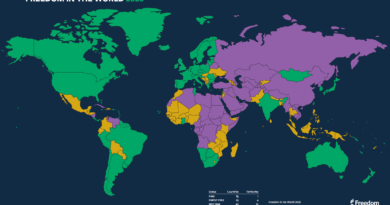Bodo Accord
Ministry of Home Affairs
Context:
A Memorandum of Settlement (MoS) was signed on 27.01.2020 with factions of the National Democratic Front of Bodoland (NDFB), All Bodo Students Union etc. This MoS seeks to increase the scope and power of Bodoland Territorial Council and to streamline its functioning; resolve issues related to Bodo people residing outside Bodoland Territorial Area Districts (BTAD); promote and protect Bodo’s social, cultural, linguistic and ethnic identities; provide legislative protection for the land rights of tribals; ensure quick development of tribal areas and rehabilitate members of NDFB factions.

Bodoland Territorial Region
It is an autonomous region in Assam, Northeast India. It is made up of four districts on the north bank of the Brahmaputra river below the foothills of Bhutan and Arunachal Pradesh. It is administered by an elected body known as the Bodoland Territorial Council which came into existence under the terms of a peace agreement signed in February 2003 and its autonomy was further extended by an agreement signed in January 2020. The region covers an area of over nine thousand square kilometres and is predominantly inhabited by the Bodo people and other indigenous communities of Assam.
Bodoland Territorial Council
- The Bodoland Territorial Council (BTC) is an autonomous district council for the Bodoland Territorial Region in India.
- It was established in February 2003.
- The BTC has 40 elected members and an additional six members that are appointed by the Governor of Assam.
- The area under the BTC jurisdiction is officially called the Bodoland Territorial Region (BTR).
- The region falls within the geographical map of the least developed region in India.
- The agro-based economy is the only source of livelihood of the people. Industrialisation and other employment opportunities are scant.
- The Bodoland Territorial Council is headed by a Speaker and is executive committee is chaired by a Chief Executive Member, currently Pramod Boro.
- The BTC consists of four contiguous districts — Kokrajhar, Baksa, Udalguri and Chirang — carved out of seven existing districts — Kokrajhar, Bongaigaon, Barpeta, Nalbari, Kamrup, Darrang and Sonitpur — an area of 8,822 km2 (11% of Assam land area i.e. 78,438 km2 ) comprising various protected tribal belts and blocks in Assam.
- Its establishment was under the Amended Sixth Schedule of the Constitution of India.
Bodo Dispute
Bodos are the largest tribal community in Assam, making up over 5-6% of the state’s population. The Bodos have had a history of separatist demands, mark by arm struggle. The four districts in Assam — Kokrajhar, Baksa, Udalguri and Chirang that constitute the Bodo Territorial Area District (BTAD), are home to Bodos along with several other ethnic groups.
The demand for a separate state for Bodos is root in reasons like administrative and Also in development apathy of the state of Assam, and a feeling that identity, culture and language of the Bodo people were subsume by the Assamese and migrants. In 1966-67, the demand for a separate state call Bodoland was raise under the banner of the Plains Tribals Council of Assam (PTCA), a political outfit. In 1987, the All Bodo Students Union (ABSU) renew the demand. “Divide Assam fifty-fifty”, was a call give by the ABSU’s then leader. This unrest was a fallout of the Assam Accord, Also 1985 which addresses the demands of protection and safeguards for the “Assamese people”, leading the Bodos to launch a movement to protect their own identity.
However, following an agreement in 1993, Bodoland become an autonomous administrative unit under the Sixth Schedule of the Constitution. And administer by the Bodoland Autonomous Council. Also Following a second peace agreement in 2003, the Bodoland Territorial Council (BTC) was form. which has 46 members (40 elect and 6 nominate by the governor) and acts as a Legislative Council to look after the development works in the Bodoland Territorial Area Districts (BTAD). The 3rd Bodo accord (2020) rename the BTC as the Bodoland Territorial Region (BTR) with more administrative and fiscal powers.
What is Bodo Accord
Key Points
- Bodoland Territorial Region would include the villages which are dominated by Bodos but are outside BTAD presently. Villages with non-Bodo population would be excluded from it.
- A committee will be formed to decide the exclusion and inclusion of new areas. Subsequently, the total number of Assembly seats will go up to 60, from the existing 40.
- Both the representatives of the All Bodo Students Union (ABSU) and of Bodoland Territorial Council (BTC) will be present in the committee.
- Bodo-Kachari Welfare Council will be set up for focused development of Bodo villages outside BTAD.
- Bodos living in the hills would be conferred a Scheduled Hill Tribe status.
- Bodo language with Devanagari script would be the associate official language for the entire Assam.
- However, the agreement has not addressed the issue of “citizenship or work permit” for non-domiciles in the BTAD yet.
- Around 1500 cadres of NDFB will be rehabilitated and assimilated by the Central and the state governments.
- The criminal cases registered against factions of NDFB members for non-heinous crimes shall be withdrawn and the cases of heinous crimes will be reviewed.
- Comprehensive solutions have been made to redress the grievances of the people.
- Families of the people killed during the Bodo movement would get ₹5 lakh each.
- A Special Development Package of ₹1500 crore would be given by the Centre to undertake specific projects for the development of Bodo areas.
Benefits
- The accord will successfully bring together leading stakeholders under one framework.
- People previously associated with armed resistance groups will enter the mainstream and contribute to the nation’s progress.
- It will further protect and popularise the unique culture of the Bodo people and will give them access to a wide range of development-oriented initiatives.
- It will bring peace, harmony and togetherness in the people of Assam.
Discover more from Simplified UPSC
Subscribe to get the latest posts sent to your email.



